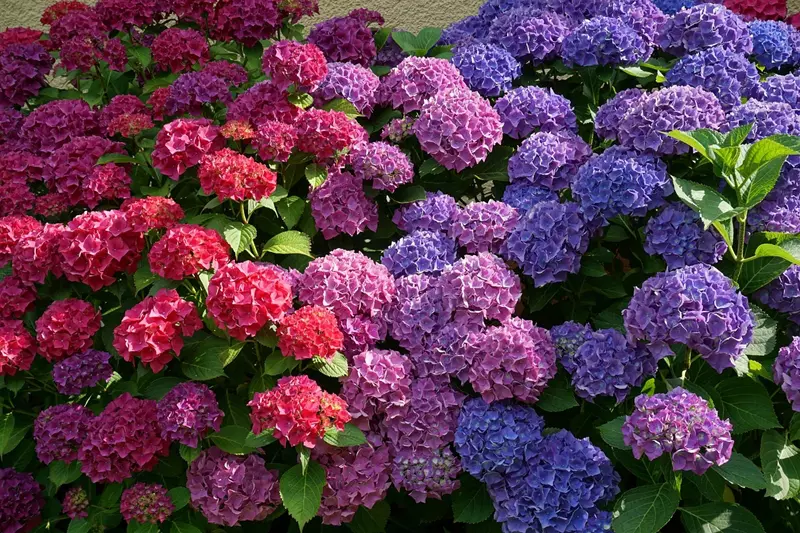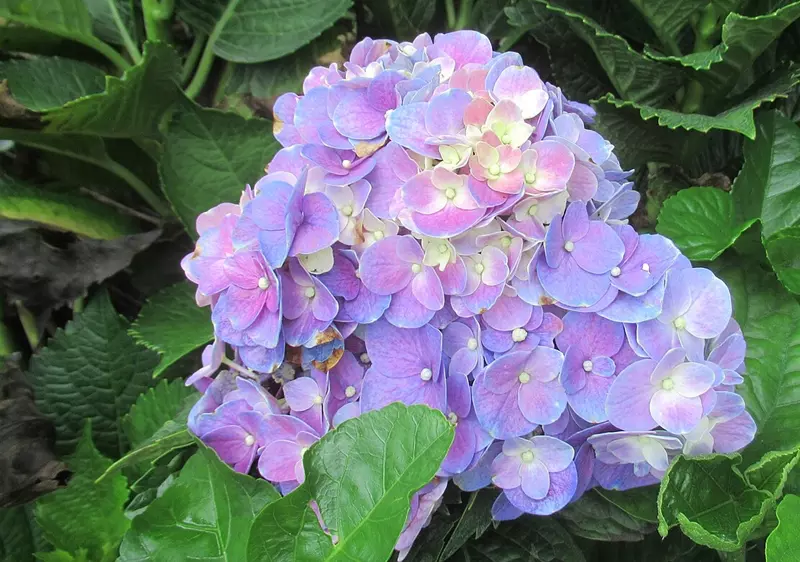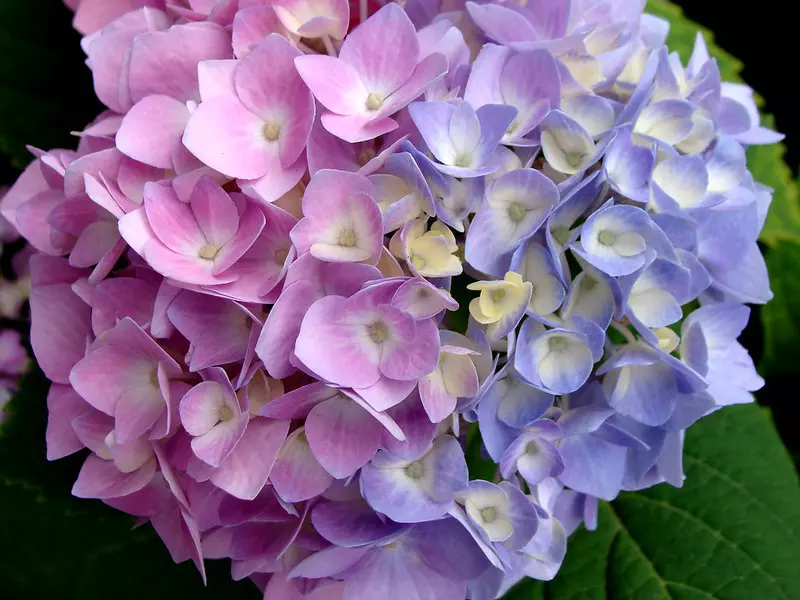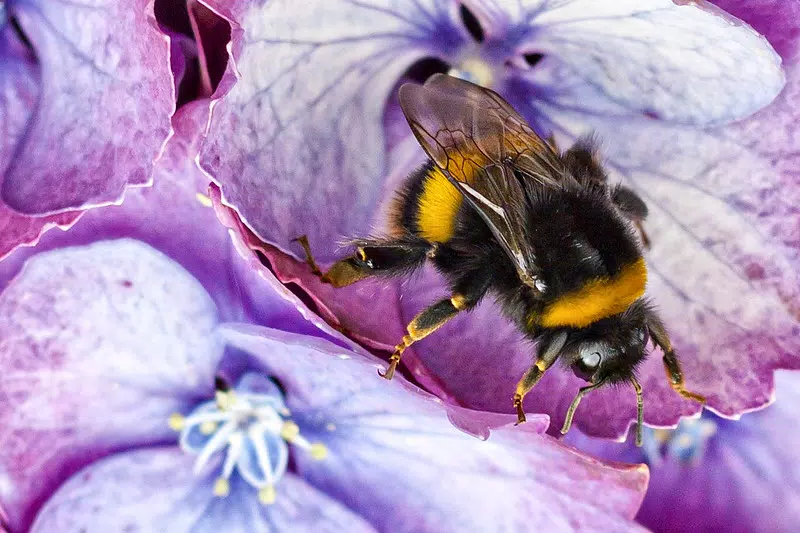
10 Tips for Ensuring Abundant Hydrangea Blooms
Discover 10 essential tips for ensuring abundant blooms in hydrangeas, including site selection, pruning, fertilisation, and pest protection.
Read MoreHydrangeas are cherished for their abundant and vibrant blooms, which can vary significantly depending on the species, climate, and care practices. Grasping the intricacies of their bloom cycles is essential for gardeners aiming to maximise the beauty of these ornamental shrubs.

The timing of hydrangea blooms is primarily influenced by the species and whether they flower on old or new wood.
Bigleaf hydrangeas, encompassing mophead and lacecap varieties, typically bloom from late spring to midsummer. They develop flower buds on old wood during the previous growing season, making them susceptible to late frost damage, which can impact blooming.
Oakleaf hydrangeas bloom on old wood, with flowering times ranging from early summer in warmer regions to midsummer in cooler climates. Their distinctive foliage and cone-shaped flower clusters add unique interest to gardens.
Panicle hydrangeas bloom on new wood, generally flowering from late spring through early autumn. Their blooms often persist on the plant into winter, providing extended visual appeal.
Smooth hydrangeas also bloom on new wood, with flowering typically occurring from June to September. They are known for their large, rounded flower clusters and adaptability to various garden conditions.
Climbing hydrangeas bloom from late spring to midsummer. Their ability to ascend structures adds a vertical dimension to garden designs.
Several factors can affect the bloom cycles of hydrangeas:
Climate plays a pivotal role in bloom timing. Hydrangeas in warmer climates tend to bloom earlier and for extended periods compared to those in cooler regions. Unseasonal weather patterns, such as late frosts or unexpected warm spells, can disrupt normal blooming schedules.
Proper pruning is crucial, especially for species that bloom on old wood. Pruning these hydrangeas in late autumn or winter can remove the next season's flower buds, leading to reduced or absent blooms. Conversely, hydrangeas that bloom on new wood can be pruned in late winter without adversely affecting their flowering.
Hydrangeas generally thrive in full sun to partial shade. However, excessive sunlight, particularly in hot climates, can cause leaf wilting and diminished blooming. Ensuring consistent moisture without waterlogging is vital, as both drought and overwatering can stress the plant and hinder bloom production.
Well-draining, nutrient-rich soil supports healthy growth and abundant blooms. Soil pH can also influence flower colour in certain species, with acidic soils producing blue flowers and alkaline soils yielding pink flowers. However, soil pH does not typically affect the timing of blooms.
To enhance hydrangea blooming:
By understanding and accommodating the specific bloom cycles and requirements of hydrangeas, gardeners can enjoy their stunning floral displays throughout the growing season.
Hydrangeas are beloved for their lush foliage and vibrant blooms. To ensure these plants thrive, it's crucial to provide appropriate light conditions tailored to each species' specific needs.
Most hydrangeas flourish in environments that offer morning sun followed by afternoon shade. This balance protects them from the intense midday sun, which can cause leaf scorch and reduced flowering.
Bigleaf hydrangeas prefer partial shade, especially in warmer climates. While they can tolerate more sun in cooler regions, excessive exposure may lead to wilting and diminished blooms.
Panicle hydrangeas are more sun-tolerant and can thrive in full sun conditions, provided they receive adequate moisture. In fact, ample sunlight can enhance their flowering.
Oakleaf hydrangeas perform best in partial shade. While they can handle more sun in cooler climates, protection from the harsh afternoon sun is beneficial to prevent leaf scorch.
Smooth hydrangeas can adapt to full sun, especially in cooler climates. However, in warmer areas, they benefit from afternoon shade to maintain optimal health and blooming.
Climbing hydrangeas are versatile, thriving in full shade to partial sun. They are ideal for north and east-facing walls, bringing life to less sunny areas of the garden.
Light exposure not only affects hydrangea growth but also influences bloom colour. For instance, Bigleaf hydrangeas may display varying hues depending on light conditions and soil pH. Additionally, insufficient light can lead to fewer blooms, while excessive sun may cause leaf scorch and stress.
By understanding and catering to the specific light requirements of each hydrangea species, gardeners can cultivate thriving plants that enhance the beauty of their landscapes.
Hydrangeas are renowned for their lush foliage and vibrant blooms. To maintain their health and ensure prolific flowering, it's essential to implement appropriate watering practices tailored to their specific needs.
Hydrangeas thrive in consistently moist, well-drained soil. Their shallow root systems make them particularly sensitive to soil moisture levels, necessitating regular monitoring to prevent both drought stress and waterlogging.
Bigleaf hydrangeas prefer consistently moist soil. They may require more frequent watering, especially during hot weather, to prevent wilting.
Panicle hydrangeas are more drought-tolerant once established. However, regular watering during dry spells promotes optimal blooming.
Oakleaf hydrangeas have deep root systems, making them relatively drought-resistant. Nonetheless, consistent moisture enhances their growth and flowering.
Smooth hydrangeas benefit from regular watering, particularly during dry periods, to support their large blooms.
Climbing hydrangeas prefer consistently moist soil but can tolerate short dry spells once established.
By adhering to these watering techniques and remaining attentive to your hydrangeas' specific needs, you can cultivate healthy plants that reward you with abundant and vibrant blooms throughout the growing season.
Hydrangeas are cherished for their vibrant blooms and lush foliage. To ensure optimal growth and flowering, it's essential to understand their specific soil preferences and fertilisation needs.
Hydrangeas thrive in moist but well-drained soils rich in organic matter. The ideal soil conditions include:
Proper fertilisation is crucial for hydrangea health and bloom production. Key considerations include:
By adhering to these soil and fertilisation practices, gardeners can cultivate robust hydrangeas that produce abundant and vibrant blooms, enhancing the beauty of their landscapes.
Proper pruning is essential for maintaining the health and enhancing the blooming potential of hydrangeas. Understanding the appropriate timing and techniques, especially focusing on spring pruning while avoiding autumn interventions, ensures these plants thrive and produce abundant flowers.
Pruning hydrangeas in late winter or early spring, just before new growth begins, allows for the removal of dead or damaged wood and encourages vigorous growth. This timing is crucial as it aligns with the plant's natural growth cycle, promoting robust flowering.
These varieties bloom on old wood, meaning they develop buds on the previous year's growth. In spring, remove dead flower heads by cutting back to the first pair of healthy buds. Avoid heavy pruning, as it can reduce flowering.
Panicle hydrangeas bloom on new wood, forming buds on the current season's growth. In early spring, cut back stems to a healthy pair of buds to encourage strong new growth and larger blooms.
Similar to panicle types, smooth hydrangeas flower on new wood. Prune them in early spring by cutting back the previous year's growth to about 30cm (12 inches) above the ground to promote vigorous blooming.
Climbing hydrangeas should be pruned after flowering in summer. Remove overlong or unwanted shoots to maintain shape and size.
Pruning hydrangeas in autumn can remove the buds that have formed for the next season's blooms, leading to reduced flowering. Additionally, leaving the spent flower heads over winter provides frost protection for the tender growth buds below.
By adhering to these spring pruning practices and avoiding autumn cuts, gardeners can ensure their hydrangeas remain healthy and produce abundant, vibrant blooms each year.
Ensuring hydrangeas receive proper winter protection is crucial for their health and bloom production in the following season. Implementing appropriate measures can safeguard these plants from harsh conditions, promoting vibrant growth and flowering.
Not all hydrangeas require extensive winter care. The necessity depends on the specific type and local climate conditions:
Initiate protective measures after the first hard frost, which induces dormancy in hydrangeas. Covering plants too early can trap moisture and encourage disease.
By implementing these winter protection strategies, gardeners can help hydrangeas withstand cold conditions and encourage robust blooming in the subsequent growing season.
Hydrangeas are cherished for their abundant and vibrant blooms. However, certain common mistakes can hinder their flowering potential. By understanding and avoiding these pitfalls, gardeners can ensure their hydrangeas thrive and produce the desired blossoms.
Pruning at the incorrect time is a frequent error that affects hydrangea blooming. Many hydrangea varieties, such as those that bloom on old wood, need to retain last year’s growth to produce flowers. Pruning them in late winter or early spring can remove the buds set the previous year, leading to a lack of blooms.
Hydrangeas require a balance of sunlight and shade to bloom effectively. While some species like Panicle Hydrangeas can tolerate more direct sun, others, such as Bigleaf Hydrangeas, prefer partial shade. Too little light can hinder blooming, while too much direct sunlight can stress the plant, especially in hot climates.
Excessive fertiliser application can lead to lush foliage at the expense of blooms. Too much nitrogen encourages leaf growth at the expense of blooms.
Both overwatering and underwatering can adversely affect hydrangea health and blooming. Hydrangeas need consistently moist soil, but not soggy.
The location of hydrangeas significantly impacts their blooming. Choosing the right location is crucial for the health and blooming of your hydrangeas.
Soil pH influences hydrangea bloom colour and health. Hydrangeas prefer well-drained soil with pH ranging between 5.2 to 5.5.
Unaddressed pest infestations and diseases can weaken hydrangeas, reducing their blooming capacity. Hydrangeas can be affected by pests such as aphids, slugs, snails, spider mites, and caterpillars.
By being mindful of these common mistakes and implementing appropriate care practices, gardeners can enhance the blooming performance of their hydrangeas, resulting in a more vibrant and floriferous display.
By adhering to these guidelines, you can encourage your hydrangeas to bloom again, enhancing the beauty of your garden with their stunning flowers.

Discover 10 essential tips for ensuring abundant blooms in hydrangeas, including site selection, pruning, fertilisation, and pest protection.
Read More
Learn how to manipulate hydrangea flower colours through soil pH adjustments, aluminium availability, and proper fertilisation techniques.
Read More
Discover how hydrangeas can enhance your pollinator-friendly garden. Learn about the best hydrangea varieties to attract bees, butterflies, and other beneficial insects.
Read More